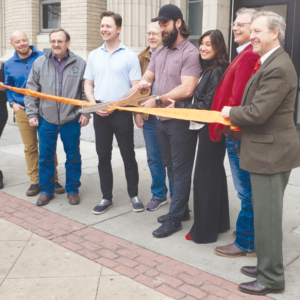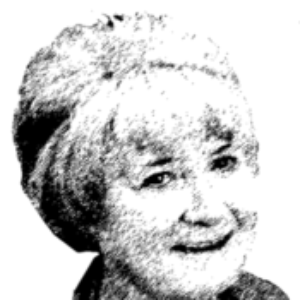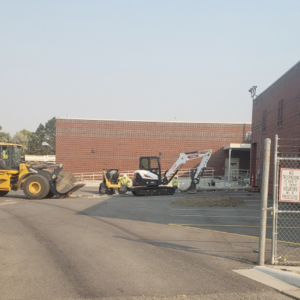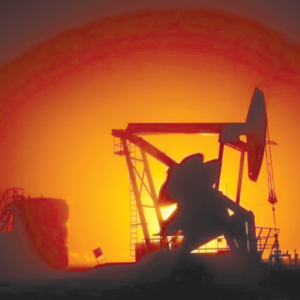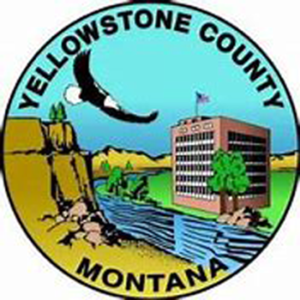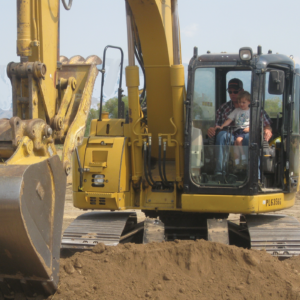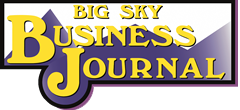As Yellowstone County officials approved, on Tuesday, Sept. 12, a $182,369,879 million county budget, for 2024-25 fiscal year, they are also focused on imminent future needs for the county. Many of the decisions about how to spend their revenues today are dictated by what they see as needed revenue for the future.
During two earlier public hearings, county commissioners and department heads made it clear that they are well aware that significant needs loom ahead, especially for the justice system, including the possibility of adding onto the jail (Yellowstone County Detention Facility) and the possibility of having to accommodate as many as three additional district court judges. But the immediate challenges for the 2024-25FY are being imposed by inflation and the struggle to retain staff, according to Jennifer Jones, the county’s Director of Finance and Budget. While those issues impact all county departments to some degree, they are especially impacting the justice system — the Sheriff’s department, the County Attorney’s department, the courts and the Youth Services Center, which deals with delinquent youth and children in need of temporary shelter.
The county’s budget is balanced. Jones commented that it is the cooperation of all the county departments in “building this budget” that results in a financial plan that demonstrates “our sound position and our continued commitment to address needs well into the future.”
Total county revenues for FY2025 is $139,803,741. The revenue budget for 2024 was $145,787,437; for 2023 it was $132,843,880; and for 2022 it was $116,487,362.
The budget for total county expenditures for FY2025 is $182,369,879. That compares to $134,152,923 in 2024; $119,847,614 in 2023 and $111,160,023 in 2022. Some expenditures are drawn from reserves and other non-tax revenue.
Fiscal Year 2025 revenues, from all sources, are budgeted at $139.8 million, of which $70 million comes from property taxes. Yellowstone County property tax revenue is $4.2 million more, over the property tax revenue collected in 2024.
New properties assessed for the first time – which are an indicator of economic growth – amounted to almost $2 million of that increase. State law allows the county to increase their levy to accommodate for inflation, which contributed $1.7 million to the $4.2 million total increase. Because inflation has been so onerous, the rest of that increase is attributable to the county using last year’s inflation increase authority, which it did not use, but finds it necessary to do so this year.
Last year was an appraisal year performed by the Montana Department of Revenue which resulted in large valuation increases, and therefore called for a reduction of levied mills for the county over the previous fiscal year. This year, valuations will not be evaluated however Yellowstone County experienced a 2.4% reduction in countywide taxable value, due to adjustments made by the Department of Revenue. Those adjustments meant lost revenue to the county unless it raised its levy to compensate, so given that increase, plus the increase in mills which were allowed for inflation, and the increase in the permissive medical levy, the county added 5.88 mills for fiscal year 2025.
Each year the county gets entitlement money from the state, which came in 4.64% higher than the last fiscal year. The funding increased because the state legislature passed legislation which exempted Class 8 property from property taxes, and a portion of that reduced property tax was then distributed to each county.
At the same time, the county is in the process of preparing a new administration building (the Miller Building, 301 North 29th Street) for occupancy by most of the county departments, except those that are part of the judicial system. As other county departments vacate the County Court House they will make room for the new judges that are expected, if the next state legislature approves their funding.
Also, Yellowstone County is in the process of building a temporary detention facility in collaboration with the City of Billings during the coming year. Projected cost is $6 million, of which the city is contributing $2.7 million.
“One important project that deserves mentioning again this year is the criminal justice needs assessment study we engaged in last fiscal year,” reports Jones, “This study will provide recommendations for system efficiency improvement, capacity management and enhanced outcomes for both adults and youths involved in the criminal justice system.” It will help guide many of those future decisions regarding public safety, mental health programs, detention space at the state and county levels, and the Youth Service Center.
“If the eventual decision is made to expand the Detention Facility again, it will be nothing like our previous expansion completed in 2020. Both a material increase in the county’s mill levy and a significant debt obligation will need approval by our voters,” stated Jones.
Construction and remodeling for the new administration building will begin this fall. Besides moving other departments, the Clerk and Recorder’s office, Public Works, Finance, and the County’s Commissioners’ office on the third floor of the Stillwater Building will move into the building by the fall of 2025, and the county will cease to be a tenant of the city’s.
Remodeling the administration building and the Court House will be done without any need for a tax increase or debt, according to Jones, because of reserves in the County’s Capital Improvement Fund.
Focusing on MetraPark – a county owned facility – Jones explained that the American Rescue Plan Act has allowed the county “to address infrastructure challenges at MetraPark, for which funding options were few.” The projects — for which much of the work has been highly visible to the community— will improve the facility for overall safety and functionality, said Jones. All APRA projects at MetraPark are expected to be completed by the fall of 2025.
Another aspect of preparing MetraPark for the future has been the engagement of an industry consulting group, whose study is to be completed by the end of FY2025. Their work has already seen “material results,” for MetraPark, according to Jones. MetraPark’s “non-tax related revenues for FY24 exceeded budget by 9.4%, while expenditures remained in check. A highlight in this area is a 20% reduction in overtime dollars compared to FY23 and FY22.”
“All of this demonstrates that we are improving the bottom line at Metra, allowing for better funding of MetrPark capital expenditure needs going forward, without requiring County General Fund or General Fund CIP infusions,” said Jones. Property taxes under a dedicated levy for Metra Park contributed $4,166,773 to the MetraPark budget this year. Non-tax revenues, generated by the fair and rentals, were $7,025,823. MetraPark and Montana Fair’s projected total budget is $12,651,341 which compares to last year’s budget of $9,949,026.
Base operations for the county, not including capital improvement projects, increased approximately 4.6% over FY24.
The Sheriff’s budget, including the jail, will experience the heaviest burden due to inflationary costs. It has felt the impact in almost every category from the spike in food costs, insurance premiums, patrol vehicles, and medical services.
Tax revenues will fund the Sheriff’s department, also referred to as public safety, and all of the judicial departments of county government to the tune of $59,847,672, consuming 32.82% of the final budget.
The Yellowstone County Detention Center’s budget will be $16,285,787.
Yellowstone County Attorney budget is $8,115,511. Last year’s was $6,057,685.
Youth Services Center budget for 2025 is $3,838,996. A significant portion of its revenue is generated by charges made to other counties.
General government expenditures are $24,572,601, or 13.47% of the total budget.
Public Works – the building of roads and bridges, emergency services ($407,066), parks ($276,123) – is $19,919,406, or 10.93% of the total budget. The road fund alone is $13,663,329. The bridge fund is $2,884,625.
Capital Improvements, such as the administration building, will consume $23,714,850, or 13% of the total budget.
Human Services, $489,766 or 0.27% of the total budget.
Public Health has a budget of $6,070,006, or 3.33% of the budget.
Insurance costs require a budget of $20,353,603, or 11.16% of the total budget.
The county pays a debt service of $897,400 for the previous jail expansion, which comprises about 0.49% of the budget.
Social / Economic expenditures has a budget of $6,254,549, or about 3.43% of the total budget.
Community Development has a budget of $711,922 or 0.39% of the budget.
Miscellaneous budget items total $1,350,888, or 0.74%.
Some controversy was generated from the public regarding the county’s decision to reduce funding to the Yellowstone Art Museum. Commissioners reduced previous years’ contributions from $220,770 to $188,053 in 2025. Expenditures for county-owned museums remained much the same. Western Heritage Center, $282,080; Yellowstone County Museum, $282,080; and Huntley Museum, $141,040.
Riverstone Health (City/County Health Department) receives funding from a dedicated mill levy of 4.75, which was approved by voters in 2002. Otherwise it has operated as a separate entity since 1998. Its county budget is $3,579,104.
Some individual budget categories: Clerk & Recorder’s /Surveyor department $789,391; Elections $990,611; Finance including finance, purchasing and central services $1,032,925; County Treasurer/Assessor /Supt. of Schools $1,951,170; Commissioners ($646,843); Clerk of District Court $1,846,636; Justice Court $2,411,896; Library $1,509,093; City-County Planning $659,004; Laurel Planning $131,015; Expenditures on ARPA projects $11,098,281; and Health Insurance Fund $12,472,600.
Big Sky Economic Development Agency (BSEDA), while a stand-alone entity, gets revenue every year from a dedicated county-wide mill levy. This year the levy is 3.16 and the revenue it generates is $1,560,072. The mill levy is only a portion of BSEDA revenues. The agency’s entitlement from the state is $284,296.

